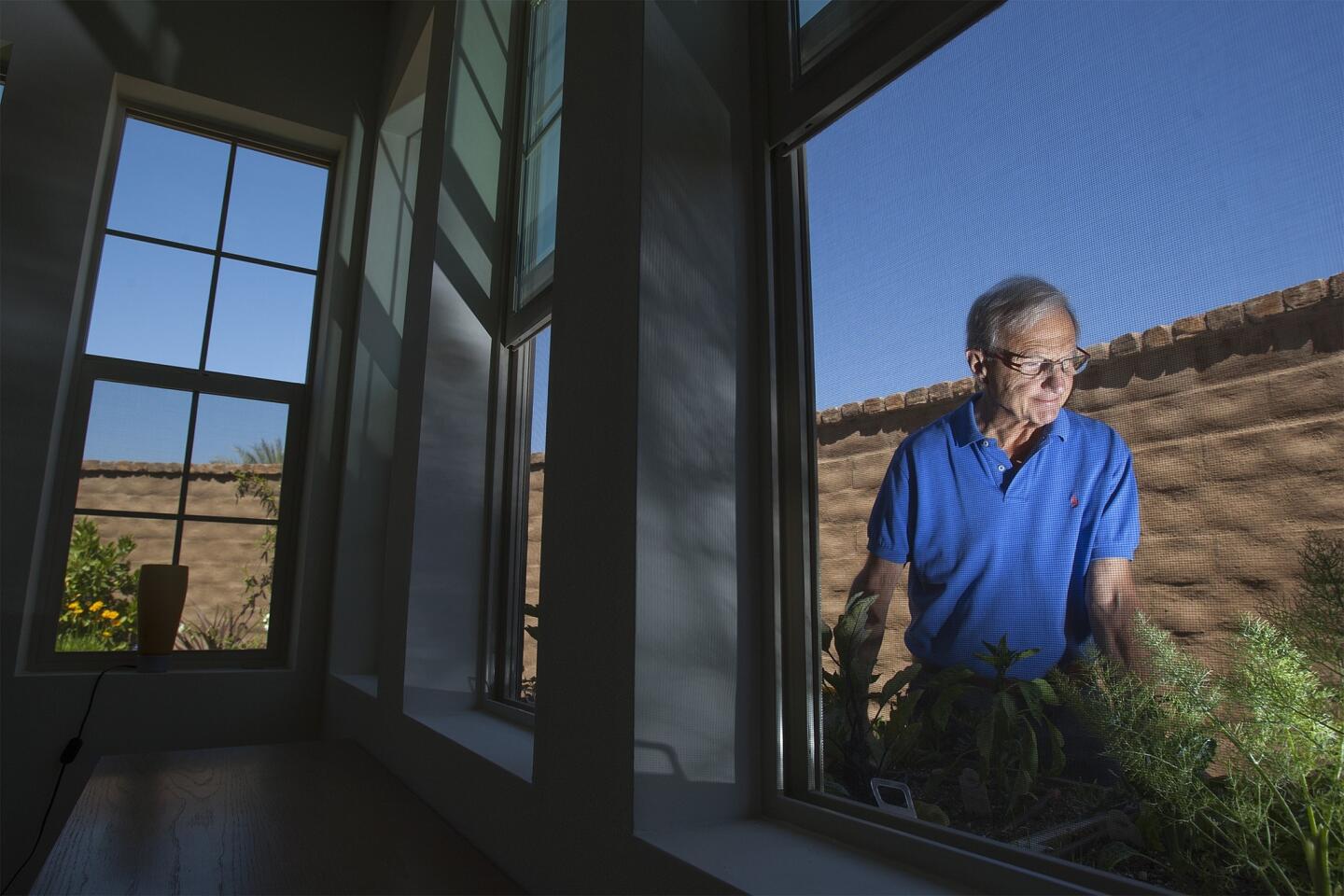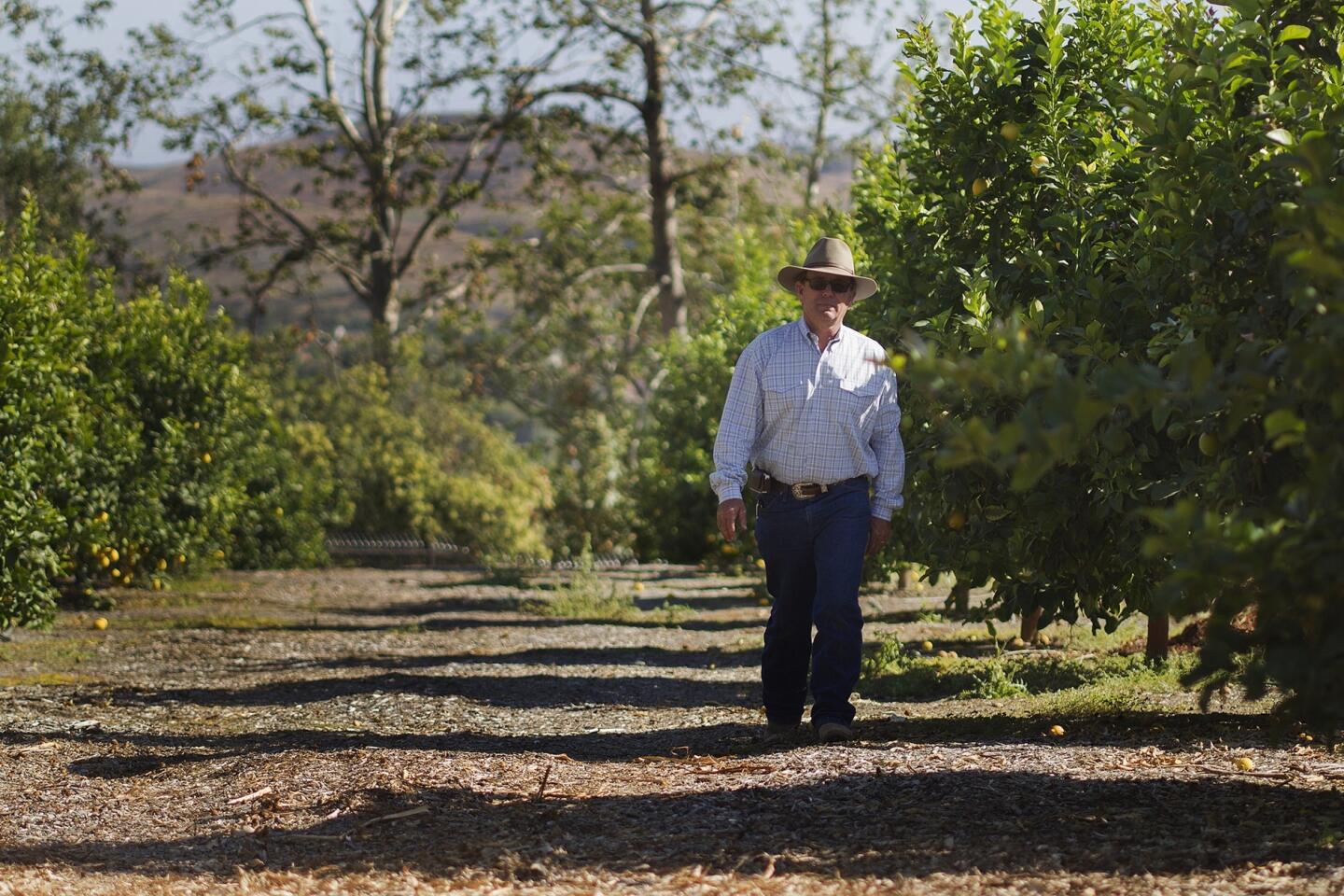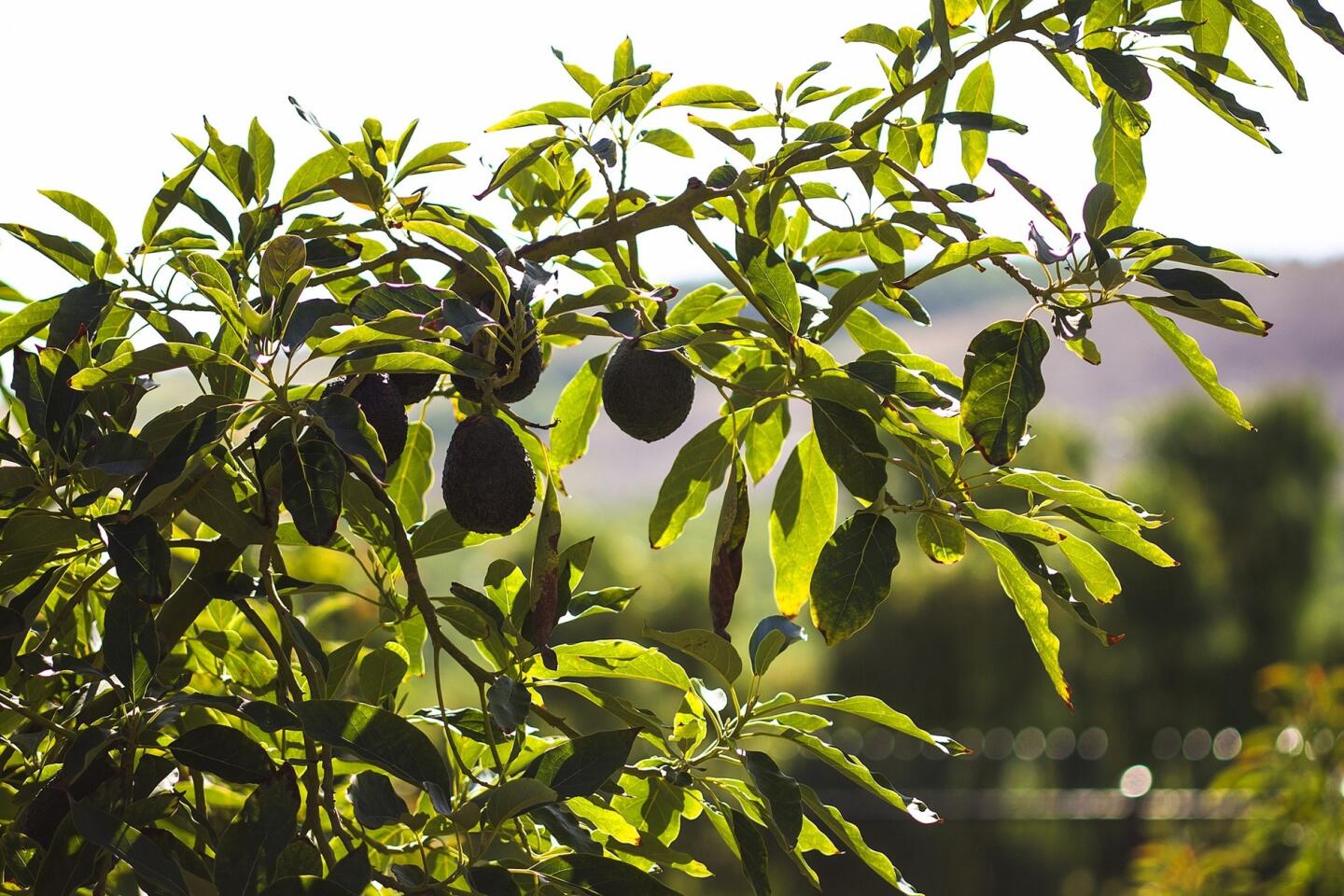Connection to the land defines Rancho Mission Viejo ‘agrihood’
- Share via
“I had only one tomato plant,” recalled Stan Sokolove of the window garden he maintained in his former San Diego high-rise apartment. Last year, he and his wife moved to Rancho Mission Viejo’s Sendero village, a new agrarian-oriented residential development in south Orange County. He chuckled as he compared that single high-rise plant with the teeming variety in and around his house now.
Sokolove’s backyard garden boasts three heirloom tomato plants, along with more than 15 other kinds of vegetables, herbs and fruits in raised beds and pots. Beyond his personal plot lie shared gardens for Sendero residents and a planned community farm. And beyond that, citrus orchards and preserved open space stretch over surrounding hillsides.
“You realize how separated you are from nature. We were really yearning for it,” he said.
Sendero, which opened its doors last year, is one of California’s pioneers in the emerging “agrihood” movement — a trend by land developers nationally to design communities that center around sustainable farms rather than golf courses or swimming pools.
The housing development’s quarter-acre community farm, when completed, will be a commercial operation that produces food for residents to buy and offers educational programs in planting, raising chickens and cooking organically. Developers say this kind of agricultural and residential integration fosters health, environmental sustainability and connection among residents.
“When you grow food, you grow community,” said Gloria Broming, an organic food consultant who will run the community farm next year. “It’s one thing to have a small garden, and it’s another to have a larger farming operation that you can participate in with others. It provides exercise, it reduces stress and it engages you with other community members.”
About 450 acres of lemon and avocado orchards and 17,000 acres of preserved open spaces surround Sendero. It’s all part of historic Rancho Mission Viejo, a 130-year-old family-owned farm and cattle business that is the largest citrus producer in Orange County.
“Deep down for homeowners, there’s a desperate longing for something real and alive in their lives, as they have become urbanized,” said Michael Ableman, agriculture author and former executive director at the Center for Urban Agriculture in Goleta, Calif. “In these new communities, the farms and fresh food they can produce is a connection to that world — a little authenticity in a society lost in technology.”
At Sendero, shared garden beds populate a cul-de-sac, and native California desert plants replace front lawns. The features fall in line with the sustainability concepts of the agrihood movement, which rose in popularity in the Northeast after the recession and quickly spread West as planners sought more efficient uses for water than golf course upkeep. Consultants see the trend as a return to an earlier lifestyle, when people lived close to their food sources, before the spread of farm industrialization in the middle of the 20th century.
“Unlike a golf course, working farms … can produce revenue rather than requiring expenditures,” said Ed McMahon of the Urban Land Institute in Washington, D.C. Before 2000, McMahon had heard of about a dozen agricultural-based communities. Now he estimates that almost 200 have been built or are under construction across the country.
“People are figuring out we can actually grow things in these communities. And that increases sustainability, it increases property values, residents are healthier, and they can actually enjoy locally grown food,” McMahon added. “It’s making agriculture the new golf.”
Still, at Rancho Mission Viejo, agriculture is only part of the package. Sendero has pools and a putting green in addition to its community farm.
Sokolove, a real estate consultant, said he and other residents would like to see more agricultural integration, especially with the 450-acre orchard. He said that the community could benefit from educational tours and a community-supported agriculture program in which residents can purchase a share of the orchard’s crops.
“I yearn and I think a lot of people yearn for the earth, to be connected with the source of our food. Anything you can do to bring that all together is a wonderful thing,” he said, looking through new sprouts in his garden. “To get your hands dirty with growth ... I think it’s good for the soul.”
dashiell.young-saver@latimes.com
Twitter: @DashYoungSaver
More to Read
Sign up for Essential California
The most important California stories and recommendations in your inbox every morning.
You may occasionally receive promotional content from the Los Angeles Times.

















